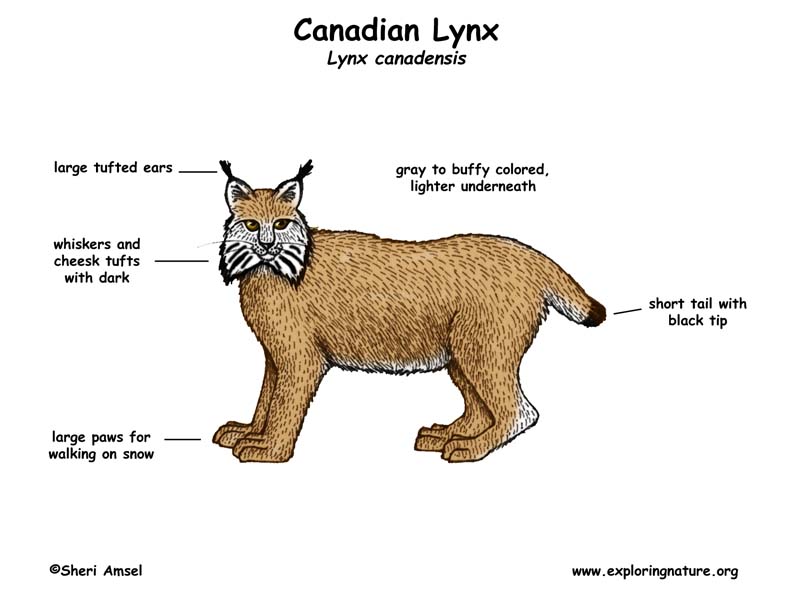

The Canadian lynx used to be found throughout the northern United States and Canada. Now they are thought to be only in Maine, Minnesota, Wyoming, Oregon, Idaho, and Michigan.
Northern forests.
Lynx are about 2.5 feet long and weigh about 20-25 pounds. They have thick, spotted fur, long legs and a short tail with a black tip.
They live alone and are active mostly at night (nocturnal).
Lynx eat mostly snowshoe hares, so live in places where hares live. This includes brushy areas and mixed, open forests. Lynx themselves like to den in old-growth forests, so travel between the two to hunt and den. They will sometimes hunt grouse, mice and squirrels.
Predators are man.
Females are pregnant for about 9 weeks (gestation) and have about 4 kittens in May.
Lynx can live 10 to 15 years in the wild. They are listed as Lower Risk - least concern on the CITES List (International List) and threatened on the U.S. Federal Endangered Species List.
Kingdom: Animalia
Phylum: Chordata
Subphylum: Vertebrata
Class: Mammalia
Order: Carnivora
Suborder: Feliformia
Family: Felidae
Subfamily: Felinae
Genus: Lynx
Species: Lynx canadensis
When you research information you must cite the reference. Citing for websites is different from citing from books, magazines and periodicals. The style of citing shown here is from the MLA Style Citations (Modern Language Association).
When citing a WEBSITE the general format is as follows.
Author Last Name, First Name(s). "Title: Subtitle of Part of Web Page, if appropriate." Title: Subtitle: Section of Page if appropriate. Sponsoring/Publishing Agency, If Given. Additional significant descriptive information. Date of Electronic Publication or other Date, such as Last Updated. Day Month Year of access < URL >.
Amsel, Sheri. "Lynx (Canadian)" Exploring Nature Educational Resource ©2005-2024. December 14, 2024
< http://www.exploringnature.org/db/view/345 >

